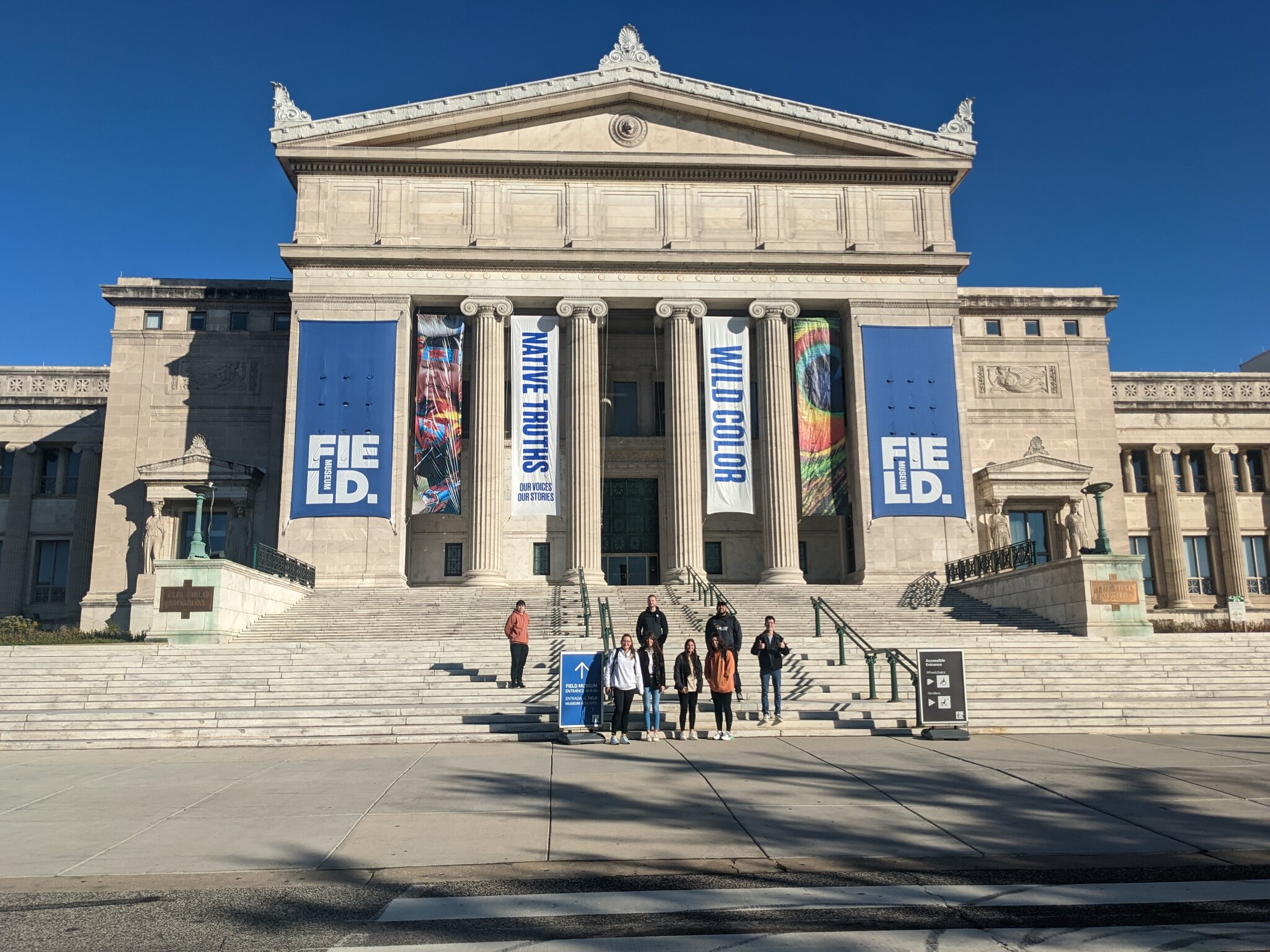LU science students get rare access at Field Museum
A group of 10 Lakeland University students in LU’s BIO 320 evolution course spent October 19 at the Field Museum of Natural History in Chicago.
The class is taught by Lakeland Biology Professor Paul Pickhardt, Ph.D., who is also dean of the Schilcutt School of Business, Science & Technology.
In addition to going through the exhibition halls on evolution and the earth’s past, students were taken behind-the-scenes to see a portion of the immense research collections held at the museum.
John Bates, Ph.D., curator and section head of life sciences research at the Field Museum, provided a once-in-a-lifetime opportunity for the students to observe preserved birds and handle fresh birds being prepared for the fourth largest museum collection of birds in the world.
Bates showed students numerous bird, egg and bone specimens illustrating the utility of cataloged collections for addressing pressing scientific questions related to climate change, toxicology, sexual selection, natural and artificial selection and the conservation of biodiversity.
The students observed firsthand specimens likely collected by A. R. Wallace, who, along with Charles Darwin, came up with the mechanism of natural selection as a means to produce evolutionary change in the 19th century. Student also saw a giant egg from the now extinct elephant birds of Madagascar.
Pickhardt has taken Lakeland’s evolution class to the Field Museum for a student-as-practitioner experience each time he has taught the course.
